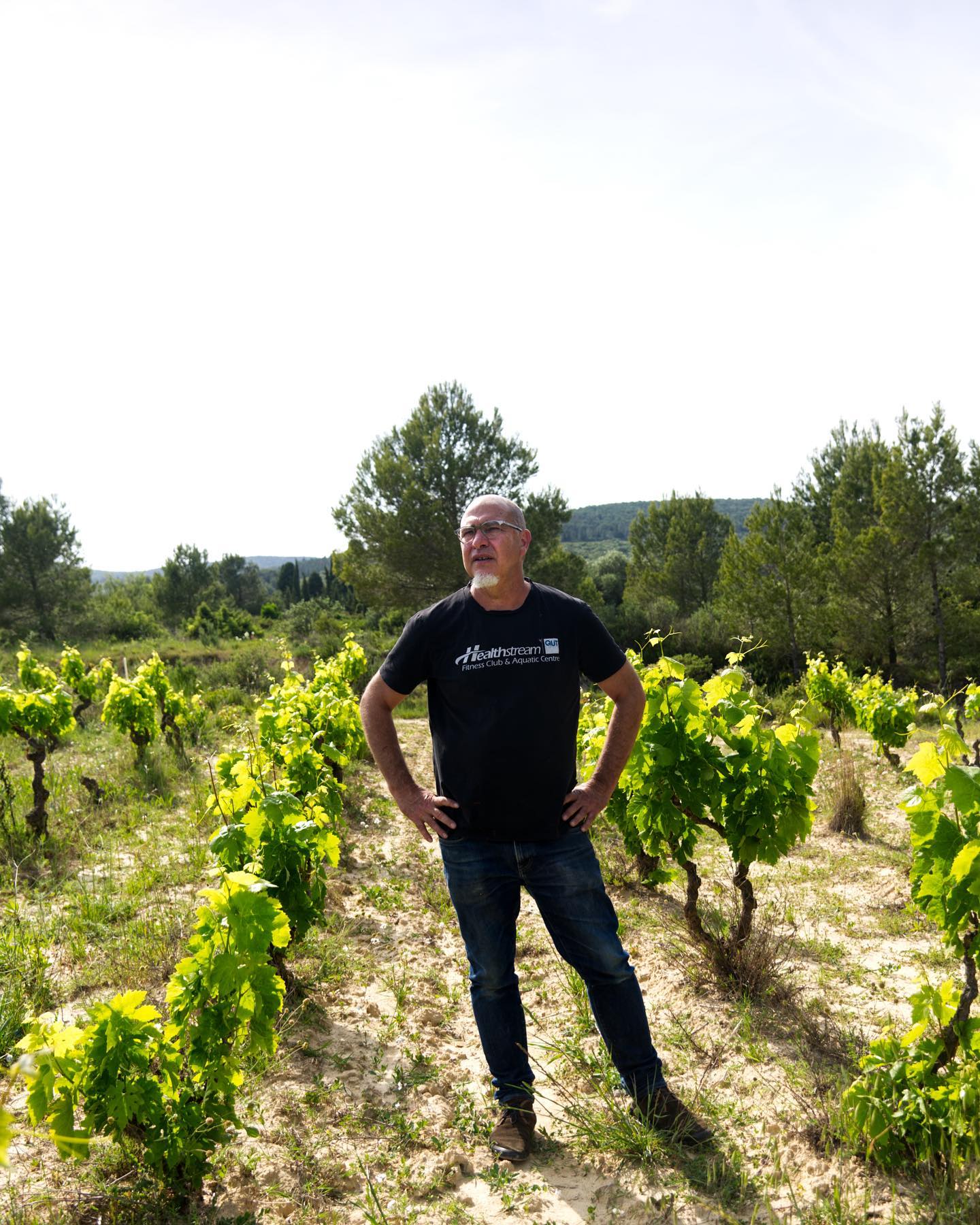
Corbières Maritime, Roussillon
In 2002, Australian Paul Old visited a friend in Languedoc-Roussillon and was captivated by the region’s ancient vines, diverse grape varieties, and unique landscapes. He felt that the full expression and potential of some of these forgotten almost lost vineyards in the region’s many terroirs were yet to be realized – and so in 2003, he started Les Clos Perdus with 1.5 hectares (3.7 acres) of vines in the Corbières Maritimes.
Today, totaling 19 hectares (47 acres), the vineyards span 32 distinct parcels across three diverse regions of Languedoc-Roussillon, each with its unique terroir.
In the Corbières Maritimes, Paul cultivates seven hectares (17 acres) on highly alkaline soils of heavy clay and limestone. These parcels of Mourvèdre, alongside Carignan planted in 1905, form the core of Mire La Mer and border shallow, salt-rich étangs between the villages of Peyriac-de-Mer and Bages.
In the Hautes Corbières, near the village of Villesèque-des-Corbières, a 1.5-hectare (3.7 acres) walled hilltop plateau is home of Prioundo. Cinsault and Grenache Noir are planted on stony, free-draining clay and limestone soil. With careful yield restriction and minimal disease incidence, he achieves high ripeness levels, capturing a terroir that reflects balance, purity, and elegance.
In the Vallée de l’Agly, Roussillon, he cultivates 10 hectares (25 acres). At Mas de las Fredas, a 2-hectare parcel of Lledoner Pelut and Syrah clings to a steep, north-facing slope of high-acid schistose marls—this is where L’Extrême Rouge comes from. On the same hillside, Grenache Gris, planted in 1895 on a north-east facing slope, produces L’Extrême Blanc. These low-yielding vines, nurtured on slow-ripening aspects, offer wines of intensity and acid retention.
Other scattered parcels of Grenache Noir and Gris, Carignan, Macabeu, and Muscat, planted on various soils and subsoils, contribute to his L’Année blends, offering opportunities for experimentation and development in this promising region.
Paul’s Biodynamic farming methods go beyond organic practices, treating the vineyard as a self-sustaining ecosystem. He relies on natural composts, lunar cycles, and biodiversity to enhance soil health and vine resilience. By eliminating synthetic chemicals and fostering harmony with nature, biodynamic farming produces expressive, terroir-driven wines while preserving the environment for future generations.
The last three years have been challenging, with three consecutive drought years significantly reducing our yield. As with most challenges, they demand adaptation, which, in turn, provides deeper insights into our craft. It is widely recognized that vines send their roots deeper into the soil in search of nutrients and water, which can positively impact the quality of the fruit. This has certainly been evident in the 2023 and 2024 vintages.
The extremely low disease pressures in our vineyards over the past three years have allowed me to focus more on the plant's metabolism and photosynthesis. Many traditional sulphur and copper treatments for odium and mildew have been replaced with compost teas, algae-based biostimulants, and biodynamic treatments 500P and 501. These treatments encourage healthy downward sap flow through photosynthesis, reciprocating with an upward flow of nutrients from the soil. This increased sap movement strengthens the plant’s immune system and reduces disease pressures.
More Info
Wines Available
L’Année blanc (Macabeu, Grenache Gris, Roussanne, Marsanne)
Cuvee 181 (Carignan, Grenache, Mourvèdre)
Corbières Prioundo (Grenache Noir blend)
Project 108 (Mourvèdre, Carignan)
Latest wine scores in international magazines:
2020 L'Extreme Llum de Lluma - 90 Wine & Spirits
Location
Languedoc-Roussillon
Appellation
AOP Corbières, Corbières, Côtés de Catalanes
Winery established
2003
Total acreage/ Elevation
49 acres / 213 – 1,030 feet
Age of Vines
Oldest vines planted in 1903
Farming methods
Organic/ Biodynamic
Varieties
Carignan, Grenache, Mourvèdre, Llendoner Pelut, Syrah, Cinsault